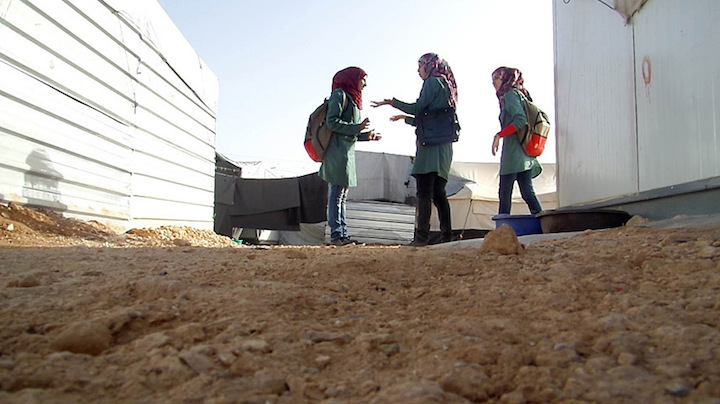The Syrian Refugee and Her Smartphone
Every data point tells a story. This one’s hers.
According to the UNHCR’s open data, there are more female Syrian refugees than male refugees, with women and children currently comprising 76.6% of the 4 million Syrian refugees.
 Photo taken from “Waves of Childhood” - a body of work created by Syrian refugee girls ages 14-18 from Jordan’s Za’atari Camp during a media workshop encouraging self reflection and story-telling. Image Source
Photo taken from “Waves of Childhood” - a body of work created by Syrian refugee girls ages 14-18 from Jordan’s Za’atari Camp during a media workshop encouraging self reflection and story-telling. Image Source
Displacement, as a significant risk factor for human trafficking, acutely affects Syrian refugees as they travel to seek asylum in other countries. Their high level of vulnerability to human trafficking is especially concerning, considering the overall percentage of women and children refugees displaced. Additionally, the number of child marriages of Syrian refugee girls is on the rise, cutting off access to future education and employment, as well as autonomy and empowerment.
Why is Smartphone Technology Relevant for Syrian Refugees?
Researchers at Penn State found that over 86% of young refugees own smartphones and 50% use the internet at least once per day or more.
-
Empowerment. Information is empowering. Refugees use WhatsApp, Facebook, and Viber to relay information back to their friends and family regarding safest routes, friendliness of certain towns to refugees, and the price of transportation, thus lowering their vulnerability to human traffickers, as they maintain their social connections and share advice. Noticing the importance of access to information, Belgrade Centre for Human Rights, an aid group in Serbia has set up Wi-Fi networks for refugees, while the UN Refugee Agency has distributed thousands of SIM cards at Jordan’s refugee camp. A UNHCR app, Services Advisor, developed by PeaceGeeks for refugees in Jordan, leverages an open source mapping tool to inform refugees of locations to receive humanitarian assistance.
-
Education. As young refugees in transit have been pulled out of schools, smartphone technology can be utilized to help fill this gap. Norway is launching an innovative competition to develop a smartphone app to teach Syrian children how to read, and many refugees are using apps to learn the languages of the countries in which they hope to receive asylum.
-
Integration. An app called Gherbtna, made by a Syrian refugee named Mojahid Akil, helps refugees in Turkey with obtaining necessary paperwork and information regarding settling in Turkey, such as residence permit requirements, finding employment, and opening bank accounts. Similarly, a German company produced “Welcome App, Dresden,” an app to help refugees to register, sign up for healthcare, and register children with schools.
Noor, a 17 year old Syrian refugee who uses her smartphone to research about Sweden, also uses the Gherbtna app, and wishes there was a similar app for Sweden. She would like to live and work there, and wonders if everyone in Europe thinks that they’re poor or don’t want to work, and only receive money from the state.
Like many other Syrian refugees, she has high hopes of a future beyond her refugee camp. She ends: “I want to become a computer programmer like my father.”
Check out UNHCR’s open data on Syrian refugees.
To view more about how UNICEF is helping Syrian refugee children, visit: UNICEF Syrian Children Fund.